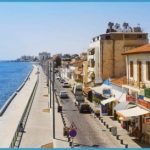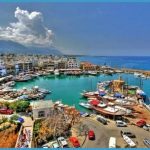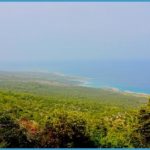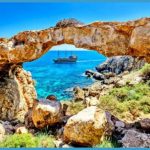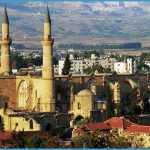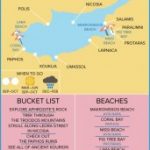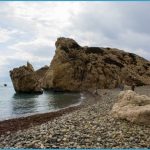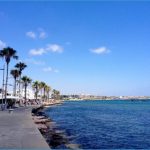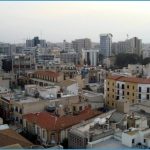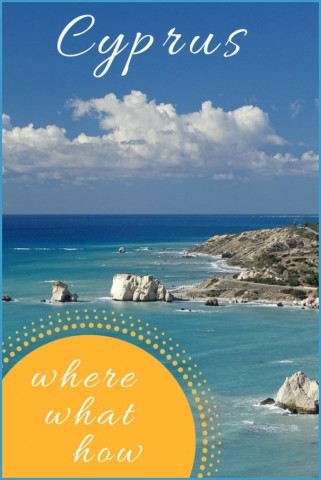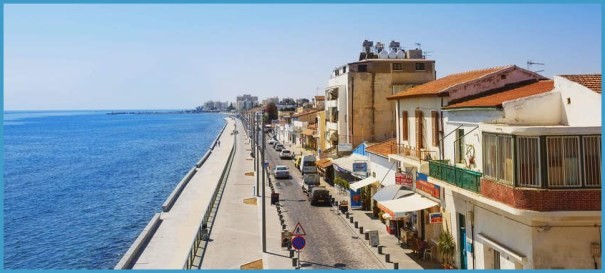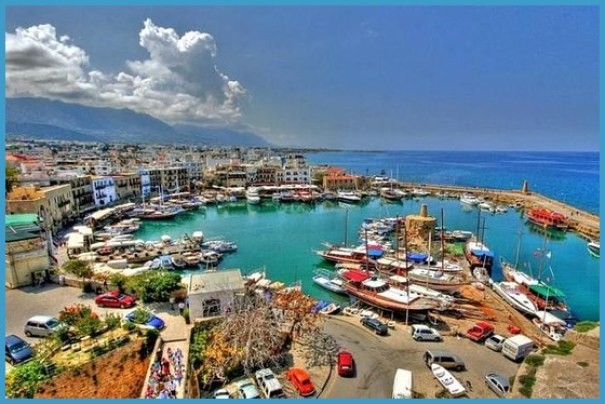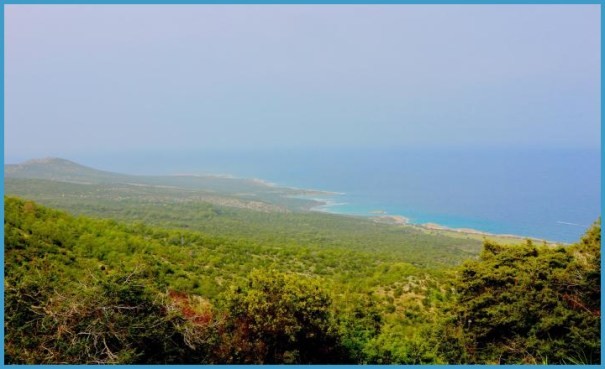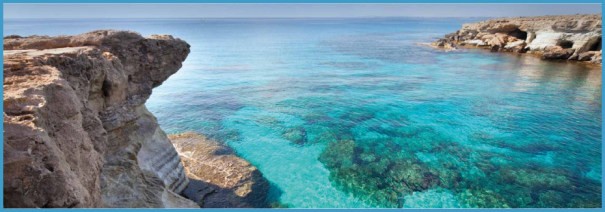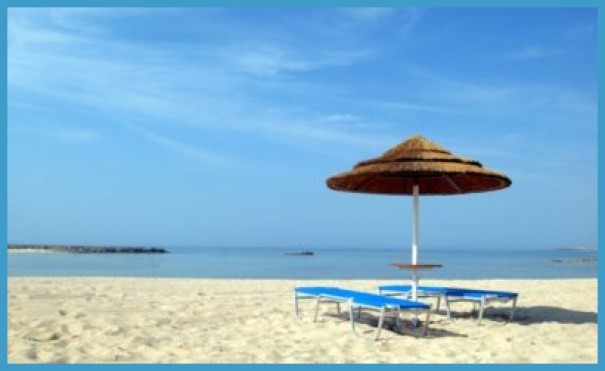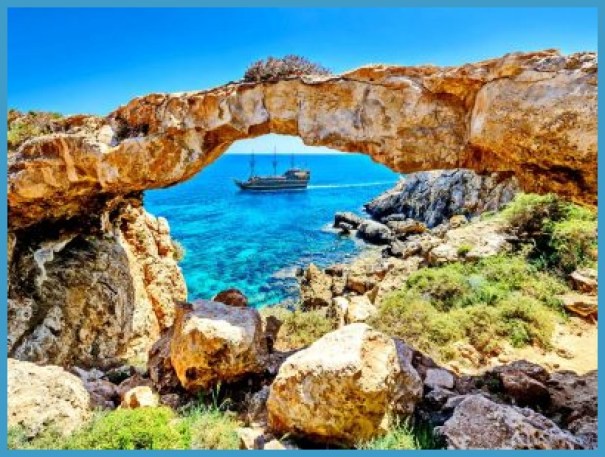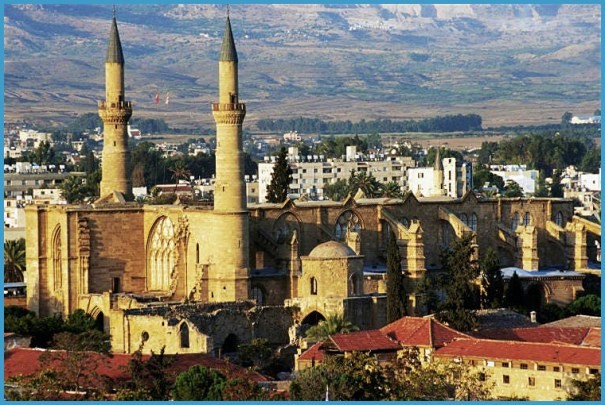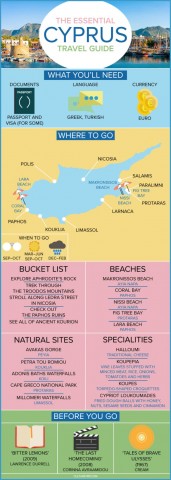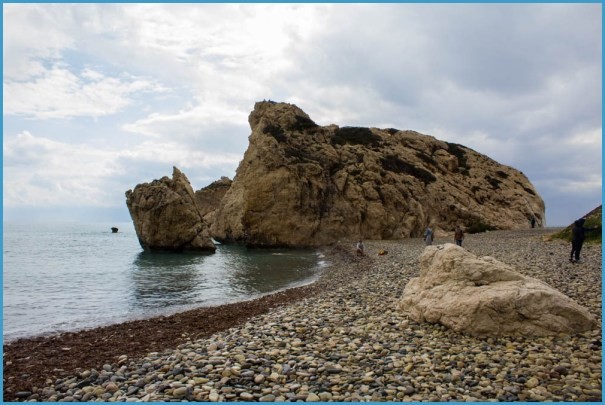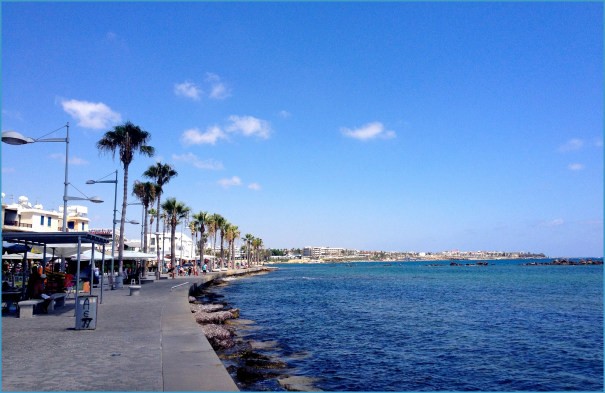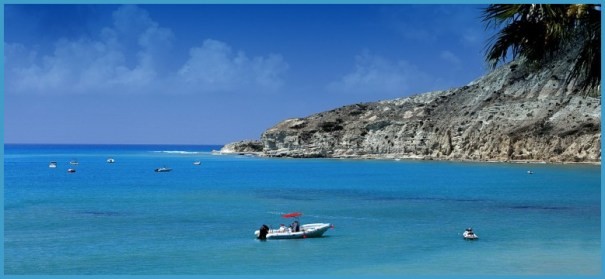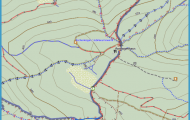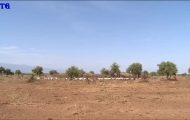EXPLORING NICOSIA COUNTRYSIDE VALLEYS
Travelling along the valley of Gialias Worth visiting is the tiny chapel of Agios Eftychios on a rise, northeast of the village, recently restored. It was originally a Hellenistic tomb containing a sarcophagus with a large Byzantine cross cut in relief on the lid. St. Eftychios was buried in the sarcophagus. Most probably the chapel was originally painted. Only some traces of frescoes, the steps, the recesses on the walls and a very tiny bema are currently preserved. Close to the chapel is another tomb belonging to Agios Theodoros. The original tomb has been destroyed and a new beautiful chapel of Byzantine design has been constructed.
The church of the Holy Apostles, on a rise to the south-west of the village, is visible by the travellers on their way from Nicosia to Limassol. The church is very interesting not only architecturally but from the point of view of paintings as well. It is a small, single-aisled building of the 12th century, with a drumless dome supported by few piers attached to the side walls forming arched recesses. Vaults and arches are semicircular. Most of the paintings belong to the 12th century, though frescoes of subsequent centuries are not absent. Dali, on the banks of the river Gialias, is the successor settlement of ancient Idalion, founded by Chalkanoras as early as the 14th century B.C. The large communal parish church of the Madonna (Evangelistria) impresses with its dome, semi- domes, arches and the carved margins around the doors and windows. Two small chapels, of Byzantine design, that of Agios Georgios, southeast of the village and that of Agios Dimitrianos, between Dali and Potamia, are built with hewn limestone blocks and contain worn out paintings. A plackard on the old road of Larnaka commemorates the fraternization (1978) of Dali with the French town Comme-la-Ville. Another inscription on the road to Lympia refers to the legend that “Adonis was killed by a wild boar at the locality Paradisia as he was waiting Goddess Aphrodite”. Current excavations are carried out south of the settlement on a tiny rise. A ruined temple related to the myth of Aphrodite and Adonis has been unearthed. Through the excavations the worship of God Apollo Amylkos has also been verified. According to the excavations, the Hellenistic and Roman buildings have been built on the foundations of older buildings. On the western acropolis many Phoenician inscriptions have been found. Excavations have revealed the palace of the kingdom of Idalium at the north-west slope of Ambeleri hill. It was built at the beginning of the Cypro-Archaic period and was reused by the Phoenicians in the 5th and 4th c. The administrative centre has also been revealed as well as the olive-press. The ruined church of Agios Mamas at Agios Sozomenos village (16th c. A.D.) Potamia. Potamia is a mixed village, with Greek and Turkish Cypriots still living together. Potamia was a Frankish feud during the medieval period when King Peter II had a “palace” in the village. The palace, most probably was built at the present locality of the “chiftlik” (large estate) of Potamia. The ruined two-storeyed buildings with beautiful arches testify the wealth of their original architecture. Among the ruined buildings the church of Agios Nikolaos is preserved, while at a tiny rise the visitor can observe the ruins of the church of Santa Katerina. At a close distance stand the ruins of a “tower” and a “cistern”. In this area among the cistern, the church of Agia Aikaterina and the “chiftlik” lies the palace with the garden of the king. L. Machairas, the chronicler, cites that the palace was destroyed by the Saracens (Mamelukes) in 1426. Agios Sozomenos, currently an abandoned village, lying close to the Attila line, most probably obtained its name from St. Sozomenos, an Alaman saint who arrived in the village probably in the 12th century A.D. In a cave on a calcarenite cliff lies the hermitage of St. Sozomenos with paintings from the 12th to the 16th century. The visitor to the hermitage can be provided with the key at Potamia. The church of Agios Mamas, is a ruined 16th century, three-aisled building with surperb architectural art, though only the walls are currently preserved. Lympia, according to medieval chronographer and historian G. Voustronios, is at least a medieval settlement. The name of the village most probably implies that when the neighbouring Dali was a kingdom, Lympia (Olympia) was a suburb or a satellite settlement. The main church of the village, was restored in 1795, being constructed much earlier.
Pediaios, the longest river of Cyprus, about 98km long, originates in the Machairas forest, flows through Nicosia and ends up in the Ammochostos bay. Its valley, narrow and steep-sided in its upper course, becomes meandering and sluggish in the middle and lower courses. Deftera (Pano Deftera & Kato Deftera), a settlement belonging originally to the Knights Templar and subsequently to the Knights of Jerusalem, is currently a relatively large village supplying neighbouring Nicosia with vegetables. Strakka. Between Lakatameia and Deftera, on the left bank of Pediaios, lies Strakka, originally an annex of Machairas monastery, currently a private property. The original church of St. Dimitrios was restored recently and was decorated with paintings. The church of Panagia Chrysospiliotissa, in a cave on the cliff of the right bank of Pediaios, is a very distinctive and curious building.
Panagia Chrysospiliotissa
According to Gunnis, the church was at one time completely painted, but currently the dampness and the falling plaster have worn out all frescoes. It is not known when the church was built. According to tradition, the wandering shepherds who discovered the icon of Virgin Mary, believed to be the work of St. Luke, were led to the cave through a curious light. According to another tradition, perhaps more convincing, the cave was the refuge of a hermit during the Middle Ages. Anageia is currently spreading along the main Nicosia-Palaichori road. The view from the top of the hill is boundless with the meanders of Pediaios, the table lands of Pera-Psimolofou and the peaks of Olympos and Kionia affording pleasant and aesthetically unique pictures.
Psimolofou, irrigated from the waters of Pediaios as well as from the waters of numerous boreholes, is the village of apricot-trees. The original compact settlement comprises many traditional houses built with mud bricks, possessing arched, often carved doors and windows, beautiful balconies and flowered gardens. The “mesas” or table lands, testifying old land surfaces, are among the best preserved in Cyprus. The church of
Virgin Mary, rebuilt in 1847, is very interesting, with traces of old paintings and valuable old portable icons. Ergates constituted part of the ancient kingdom of Tamassos. As its name implies, here lived the labourers of the neighbouring copper mines. Its population increases, thanks particularly to the industrial estate set up in its administrative area. At Korakas locality, a few decades ago, the villagers unearthed antiquities, perhaps testifying the ancient roots of the village. Episkopeio. As its name implies, the village was the seat of the ancient bishopric of Tamassos. A small pottery, from where artifacts can be bought, operates in Episkopeio. Pera, about 18km south-west of Nicosia, was a suburb of the ancient kingdom of Tamassos, lying, as its name implies, beyond the Pediaios river. According to the Life of St. Irakleidios, Pera was a large village with inhabitants believing in god Asklepios. It is mentioned that between Pera and Episkopeio, villagers found a bronze statue of Apollo, the head of which is currently housed in the British Museum. The village is known for its remarkable architectural heritage, with a few houses declared ancient monuments. The two important churches of Pera are: the church of Archangelos Michail, built in the 17th century and restored in 1890, and the church of Panagia Odigitria, built in 1882 with a paved floor outside, added recently. According to Leontios Machairas, two Alaman saints settled in the village, most probably in the 12th century, namely St. Vasilios and Dimitrianos, both bishops. Politiko lies on a slope with extensive view to all directions. It is well known for the archaeological site of Tamassos and the nearby monastery of Agios Irakleidios. Tamassos was one of the twelve kingdoms of ancient Cyprus, with an economy based on agriculture and copper mining. The mines of Mitsero, Agrokipia and Kapedes, most probably belonged to the kingdom of Tamassos. Strabo writes that “at Tamassos there are abundant mines of copper, in which is found chalcanthite (sulphate of copper) and also the rust of copper, which is useful for its medicinal properties”.
The royal tomb of Tamassos
It is believed that many of the ancient buildings of Tamassos lie below the present settlement of Politiko. The settlements of Politiko (which comprised the residential and civic quarters of the ruling families), Ergates (where the labourers of the mines lived), Episkopeio (where stood the bishopric during the early Christian period) and Pera (the settlement beyond the river Pediaios) belonged to an extensive area covered by the kingdom of Tamassos. Aphrodite and Apollo were worshipped in Tamassos, while at Pera people worshipped Asklepios. In the wider area of Politiko, cemeteries from the Bronze age until the Roman times were unearthed. The findings testify the influence of the neighbouring mines on the life of the people of ancient Tamassos. Not very much is known of the Kings of Tamassos. However, according to Hill and other sources, the mines fell into the hands of the Phoenicians (4th century B.C.), while later Alexander the Great granted Tamassos to king Pnytagoras of Salamis as a reward for his service at the battle of Tyre. During the Roman times the well-known circular Roman road passed through Tamassos, a witness that at that time Tamassos was a large center. The visitor to Politiko, could see the two royal underground tombs. Both are in good condition of preservation, though it is not certain to which royal family they belonged. They are uniform with an imposing architectural style, a dromos, an outer entrance and two chambers. The side walls are covered with well-cut limestone slabs. In one of the tombs there is a large sargophagus. Close to Politiko and to the left of Pediaios river stands the historic
Nicosia – Explore Cyprus – Updated Guide and Travel Information Photo Gallery
Inside the monastery of Agios Irakleidios
Monastery of Agios Irakleidios. The greenery in the garden, the varied flowers in pots, the four large wine jars next to the corridor, the thin octagonal columns and the pebble mosaics on the pavement of the corridor as well as the traditional architecture of the cells and buildings surrounding the church impress the visitor. The two-aisled church of Agios Irakleidios, and the domed mausoleum, south-east of the church, built in the 14th century, are close to each other. The original entrance to the tomb of Agios Irakleidios lies east of the church. The monastery was originally built in the early Christian times, and most probably in the 4th century A.D. though destroyed and rebuilt several times. The church, originally three-aisled, was restored in the 8th century, as well as the 14th/15th c. The monastic buildings in their present condition date back to 1773, though paintings date from the eleventh century. From the middle of the 19th century the monastery was abandoned, while its property was rented. It was in 1963 that the monastery was restored to its present condition and was staffed by nuns. The scull of Agios Irakleidios is preserved in a silver-gilted case and can be seen by the visitors. Irakleidios, according to tradition, met apostles Paul and Barnabas at Kition when they arrived in Cyprus and led them to Pafos over the Troodos mountains. He was baptised in the Solia valley. On their second visit to Cyprus they consecrated Irakleidios bishop of the church of Tamassos. It is worth mentioning that as from the 17th century, the monastery was famous for icon and fresco painting. For one hundred years its monks painted many churches throughout Cyprus. The iconostasis of the northern aisle, dedicated to Agia Triada, was made in 1759. Filani, is an abandoned settlement. The visitors will see the peculiar traditional architecture of a few surviving, even ruined, buildings. It is not certain whether Filani was a hamlet or an annex of the Machairas monastery which lies close by. At Filani functions the Therapeutic Community (Agia Skepi) mainly for narcotic persons. The rehabilitation of these persons is the main objective of the Community.
Exploring the middle and upper valley of Akaki river
Route: Agios Ioannis (Malountas), Acheras, Arediou, Malounta,
Klirou, Kalo Chorio, Agios Epifanios, Apliki, Farmakas, Kampi
Agios Ioannis (Malountas) is recommended, particularly to those interested in observing or studying the power of erosion and weathering on rocks. Many sculptures of nature are to be found in the village. The view from Korakas, some 410 metres a.s.l, is imposing. Other interesting sites are the water-mill of Vartalis (not functioning any more), the peculiar chains of wells along a track of asphalted road within the village, a few traditional houses and the church of St John the Baptist, built in 1856. A lion’s head, most probably from the nearby old settlement of Acheras, belonging to the 14th century, is built into the wall of the church. An ostrich farm, open to the public on certain days, is located at Agios Ioannis (Malountas).
Rural life in Farmakas
Acheras. Not far away from Agios Ioannis, lies the Acheras estate, which in the past was either a monastery or a small settlement. Acheras belonged to the Grand Commandery, while earlier, according to chronicler L. Machairas, five Alaman saints (St. Heliophotos, St. Avxouthenios, St. Pamphoditis, St. Pammegistos and St. Paphnoutios) arrived and stayed in the village. Arediou, close to Nicosia and the industrial estate of Ergates, is growing in population. The two churches are the most interesting sites in the village. In the courtyard of the modern church of Agios Georgios there is a limestone basin with its interior carved in a cross shape. The basin (most probably a baptismal font) was removed from the opposite hill, where, according to tradition, there was an ancient temple. The hill is known as the Hill of the Cross. The old church of the Madonna (Panagia Odigitria), on the periphery of the settlement, was most probably entirely painted in its interior. It is a building of the 15th century, while its iconostasis dates back to 1695. Malounta, is a village with cultural monuments. In the church of Panagia Pantanassa, building of 1763, there is a gilted iconostasis, a painting of Archangelos Michail and a rare icon of St. Panigyrios. Near the village, on the way to Agrokipia and Mitsero, on the northern side of the medieval bridge that crosses the river, there is a Lusignan coat of arms. A new cultural monument, in memory of the Greek officers and soldiers who were killed during the Turkish invasion (1974), has been set up in the nearby military camp.


